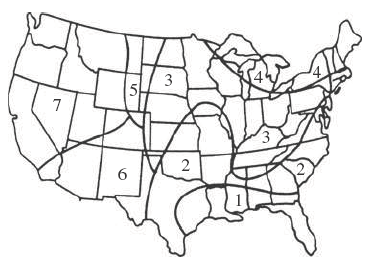Related Resources: calculators
Rainfall Runoff Rate Formulas and Calculator
Rainfall Runoff Rate On Minor Size Land Formulas and Calculator
The most common means for determining runoff for minor hydraulic structures is the rational formula:
Eq. 1
Q = C · I · A
Where:
Q = peak discharge, ft3/s (m3/s)
C = runoff coefficient = percentage of rain that appears as direct runoff
I = rainfall intensity, in/h (mm/h)
A = drainage area, acres (m2)
Drainage area = land area (in2) x depth + runoff volume onto land (in3)
Rainfall Intensity Formula
Chow lists 24 rainfall-intensity formulas of the form:
Eq. 2
I = K · Fn1 / ( t + b )n
Where:
I = rainfall intensity, in/h (mm/h)
K, b, n, and n1 = coefficient, factor, and exponents, respectively, depending on conditions that affect rainfall intensity, see Table 1.0
F = frequency of occurrence of rainfall, years
t = duration of storm, min,
= time of concentration
Reference
1 gal/sec = 60.0 gal/min = 3600 gal/hr
cu-ft = ft3
Sq.-m = m3
The most useful of these rainfall-intensity formulas is the Steel formula:
Eq. 3
I = K / ( t + b )
The Steel formula gives the average maximum precipitation rates for durations up to 2 h.

Figure 1 - Regions of the United States for use with the Steel formula.
Table 1.0 Coefficients for Steel Formula
|
Frequency
Years |
Coefficients
|
Region
|
||||||
|
1
|
2
|
3
|
4
|
5
|
6
|
7
|
||
|
2
|
K
|
206
|
140
|
106
|
70
|
70
|
68
|
32
|
|
b
|
30
|
21
|
17
|
13
|
16
|
14
|
11
|
|
|
4
|
K
|
247
|
190
|
131
|
97
|
81
|
75
|
48
|
|
b
|
29
|
25
|
19
|
16
|
13
|
12
|
12
|
|
|
10
|
K
|
300
|
230
|
170
|
111
|
111
|
122
|
60
|
|
b
|
36
|
29
|
23
|
16
|
17
|
23
|
13
|
|
|
25
|
K
|
327
|
260
|
230
|
170
|
130
|
155
|
67
|
|
b
|
33
|
32
|
30
|
27
|
17
|
26
|
10
|
|
Where:
- K and b are dependent on the storm frequency and region of the United States (Fig. 1.0 and Table 1.0).
- The Steel formula gives the average maximum precipitation rates for durations up to 2 h.
Related:
- Fluid Flow Open Channel Chézy and Manning's Equation Calculator
- Pressure Drop Along Pipe Length - Fluid Flow Hydraulic and Pneumatic
- Pipe Friction Equations Within Pipe For Fluid Flow
- Natural Gas Pipe Flow Rate Calculator
- Velocity and Flow Capacity of Oil Schedule 40 Pipe
- Horizontal Tank Draining Time Formulas and Calculator
- Vertical Tank Draining Time Formulas and Calculator
References:
- Civil Engineering Formulas 2009, Tyler G. Hicks, P.E.,